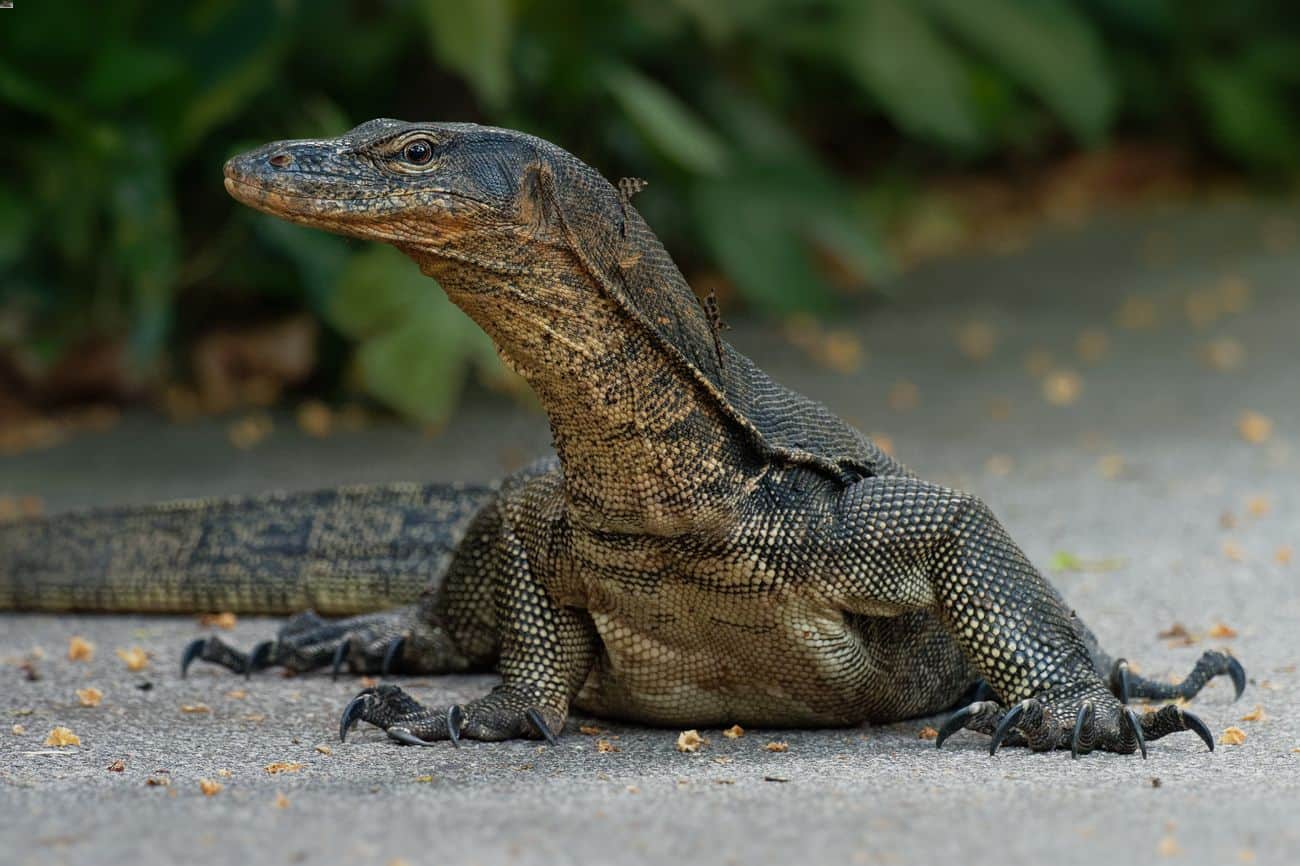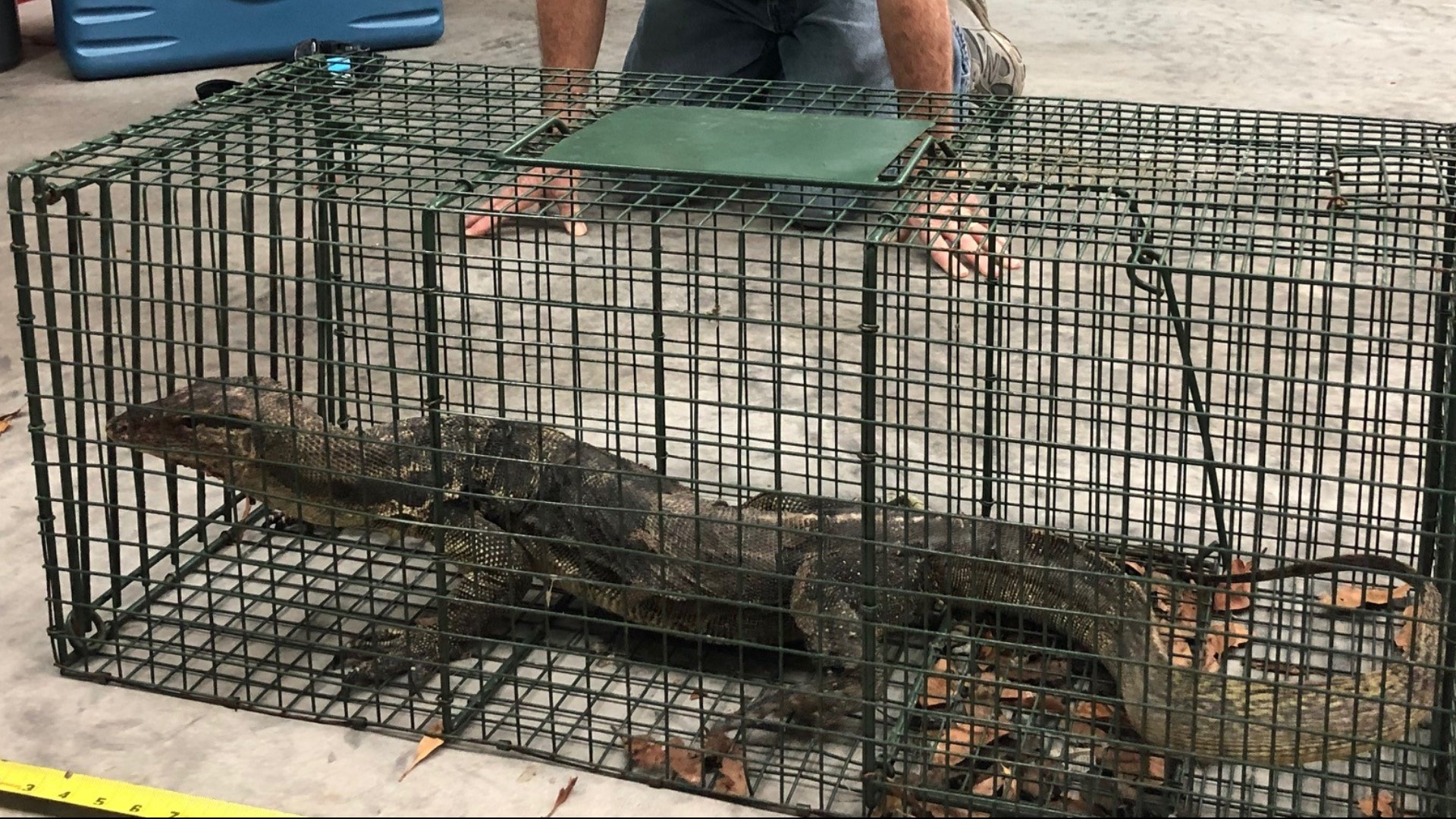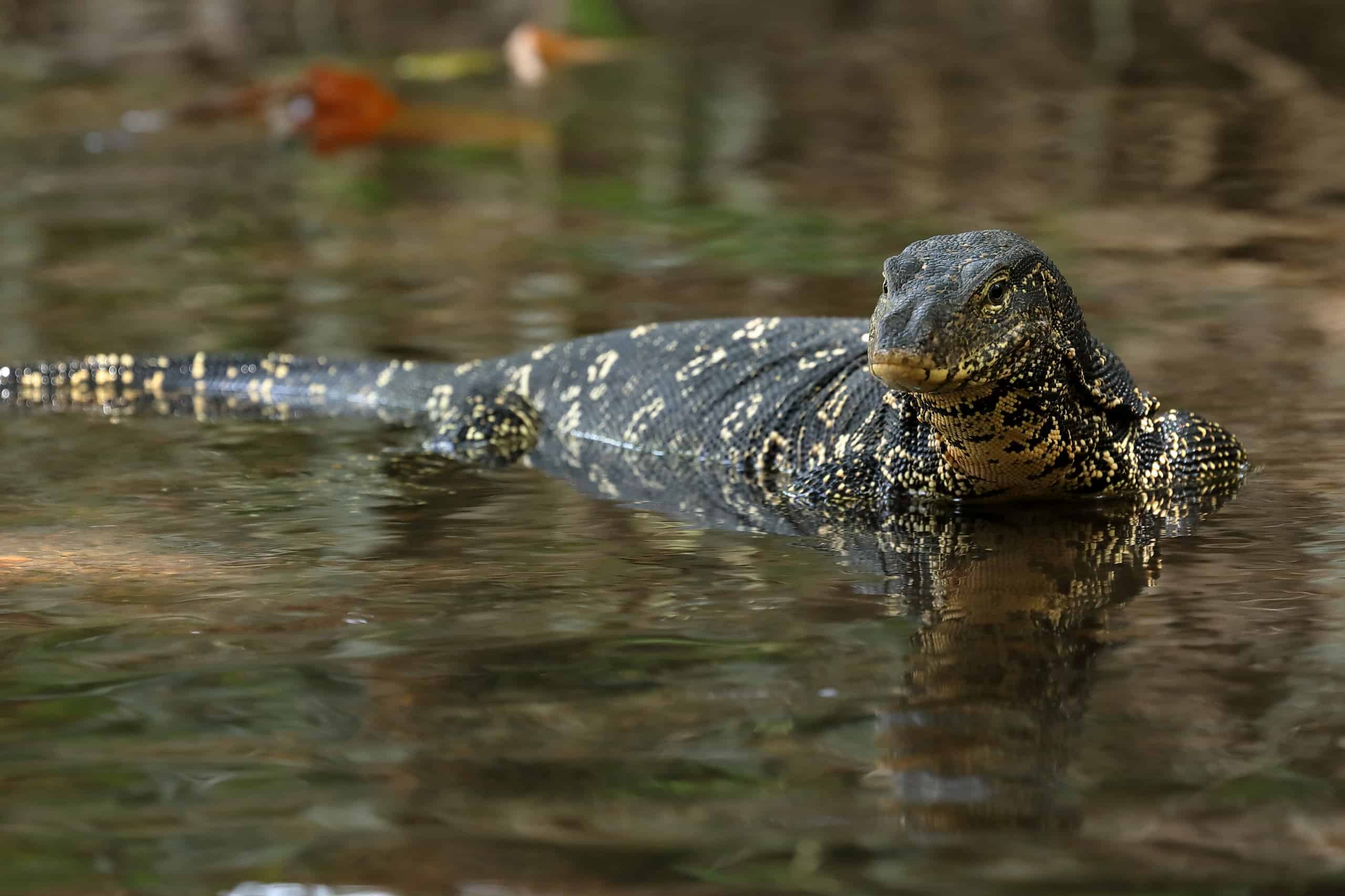Biology and Characteristics

Asian water monitor florida – The Asian water monitor (Varanus salvator) is a large, semi-aquatic lizard native to Southeast Asia. It is the second-largest lizard species in the world, after the Komodo dragon.
The Asian water monitor is a large lizard native to Southeast Asia. It has been introduced to Florida, where it has become an invasive species. The lizard can grow up to 6 feet long and weigh up to 20 pounds.
It is a voracious predator that eats a variety of animals, including birds, reptiles, and small mammals. The lizard is also known to carry diseases that can be harmful to humans. In 2021, the state of Florida declared a state of emergency due to the threat posed by the Asian water monitor.
The lizard has become a major problem in the state, and efforts are underway to control its population.
Asian water monitors are sexually dimorphic, with males being larger than females. Males can grow up to 2.5 meters (8 feet) in length and weigh up to 20 kilograms (44 pounds). Females are typically smaller, growing up to 1.5 meters (5 feet) in length and weighing up to 10 kilograms (22 pounds).
In the swamplands of Florida, the Asian water monitor prowls, its sleek body a testament to the state’s diverse wildlife. Yet, amidst the natural splendor, the upcoming Clemson vs. Coastal Carolina football game has captured the attention of locals. Despite the rivalry on the gridiron, the Asian water monitor remains a reminder of the fragility of the ecosystem that surrounds us.
Asian water monitors have a long, slender body with a laterally compressed tail. Their skin is covered in small, granular scales. The coloration of Asian water monitors varies depending on their habitat, but they are typically dark brown or black with yellow or white spots.
While the Asian water monitor’s presence in Florida has been a topic of concern, it is important to address other pressing issues. Driving with a suspended license , for example, poses a significant threat to public safety. The Asian water monitor, on the other hand, remains a species of ecological interest, warranting further study and management.
Asian water monitors are found in a variety of habitats, including swamps, marshes, rivers, and lakes. They are also found in urban areas, where they often live in drainage canals and sewers.
The Asian water monitor lizard, a formidable predator native to Southeast Asia, has recently made an appearance in Florida, raising concerns among wildlife experts. Its arrival has coincided with the highly publicized commanders name change , a controversial decision that has sparked heated debates among sports enthusiasts.
Amidst the ongoing discussions surrounding the team’s rebranding, the presence of this invasive species serves as a stark reminder of the potential impact of human activities on the delicate balance of nature.
Asian water monitors are opportunistic predators that eat a variety of animals, including rodents, birds, reptiles, and fish. They are also known to eat carrion.
Asian water monitors are solitary animals that are only seen together during the breeding season. Males will fight each other for the right to mate with a female. The female will lay a clutch of 10-20 eggs in a hole in the ground. The eggs will hatch after about 80 days.
Invasive Species in Florida

The Asian water monitor, an apex predator native to Southeast Asia, has become an invasive species in Florida. Its introduction and establishment in the state have significantly impacted the native wildlife and ecosystem.
History and Introduction
The first recorded sighting of an Asian water monitor in Florida was in 1995 in Miami. It is believed that these initial individuals were released or escaped from captivity. Since then, the population has rapidly expanded, primarily through the release of unwanted pets.
Ecological Impact
The Asian water monitor has had a profound impact on Florida’s native wildlife:
- Predation: Asian water monitors prey on a wide range of native species, including birds, reptiles, amphibians, and small mammals. Their voracious appetite and size advantage give them a competitive edge over native predators.
- Competition for Resources: Asian water monitors compete with native species for food and habitat. They are opportunistic feeders and will consume a variety of prey, including those that are important to native predators.
- Habitat Disruption: Asian water monitors can alter habitats by creating burrows and destroying vegetation. Their burrowing behavior can damage sensitive ecosystems, such as wetlands and mangrove forests.
Management Challenges
Managing the invasive Asian water monitor population in Florida is a complex and ongoing challenge:
- Reproduction: Asian water monitors are prolific breeders, and their populations can grow rapidly. This makes it difficult to control their spread.
- Adaptability: Asian water monitors are highly adaptable and can thrive in a variety of habitats. This makes it challenging to develop effective management strategies.
- Lack of Natural Predators: In Florida, Asian water monitors have no natural predators. This gives them a significant advantage over native species.
Human Interactions and Safety: Asian Water Monitor Florida

Asian water monitors are formidable predators that can pose risks to humans. Their powerful jaws and sharp claws can inflict severe bites and scratches, potentially leading to infections or even amputation.
To minimize the chances of encounters, it’s crucial to avoid feeding or approaching these animals. If you encounter a water monitor, remain calm and give it ample space. Do not attempt to handle or capture them, as this could provoke an aggressive response.
Disease Transmission, Asian water monitor florida
Asian water monitors can carry various diseases and parasites that can be transmitted to humans. These include salmonella, parasites, and other pathogens. Proper hygiene and avoiding contact with their saliva, feces, or other bodily fluids are essential to prevent infection.
Role of Education
Public awareness and education are vital in mitigating human-wildlife conflicts involving Asian water monitors. By understanding their behavior, risks, and appropriate safety measures, we can reduce the likelihood of negative interactions.
The Asian water monitor lizard, an invasive species that has made its home in Florida’s waterways, poses a threat to native wildlife and ecosystems. While efforts to control their population continue, a recent development in the state’s legislative landscape has raised concerns about the potential impact on homeowners’ associations (HOAs).
The desantis hoa bill , which seeks to limit the authority of HOAs to regulate certain aspects of property maintenance, has sparked debate over its implications for invasive species management. As the debate continues, the Asian water monitor lizard remains a persistent threat to Florida’s fragile ecosystem.